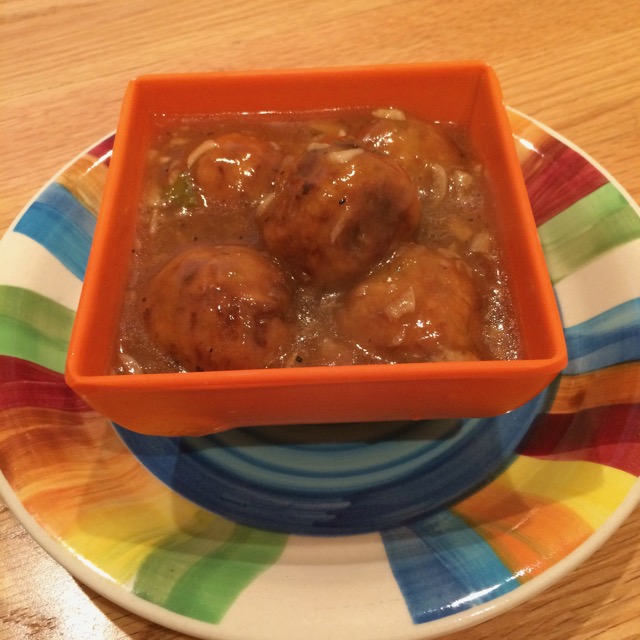Making of a Veg Manchurian - Part 2

It's been a while since I wrote my last post since I had been busy with the Spanish lessons for a while. But nevertheless, I am back and with another experience of cooking one more delicious dish
I love Vegetable Manchurian. It was my favorite snack in childhood. I remember going to fancy Chinese restaurants and Manchurian would be the only appetizer I would be interested in. That time I never envisioned to be able to cook such an amazing dish. When I was a kid, and still I perceive things to be beyond my capacities when I enjoy them the most.
However, I am here again after 3 tries this year only one of which turned out to be successful to get eatable Manchurian.
I prepared for the first time in 2016 when I was just starting to learn the complex recipe. That time I followed the VahChef video which was a great start. This year, however, I updated my preferences and attempted to prepare it in a different way which resonates very well with the VahChef style as well. It was a Cabbage Manchurian recipe from CookingShooking.
However, my efforts didn't produce good results first two times due to my overconfidence and inclination to ignore small things which still had a big impact on the dish in a critical way
The first time, the Manchurian balls were great. But when I tried to make a gravy, I made two mistakes - First, didn't chop the onion to fine pieces which caused them to float in the gravy and gave the impression that I was rather having onion soup than the Manchurian one. At the same time, I added too much of a water which derailed the thicker consistency usually demanded by Manchurians so that they don't get all immersed by getting sponge-like characteristics. To make matters worse, I added too much corn flour which worked well for a time being, but it made corn flour lumps and made the gravy thicker beyond repair.
The second time, I fixed all my mistakes while making gravy. It was because I paid close attention to instructions mentioned in the video and took my time to allow the gravy to simmer and attain the expected consistency and knew where to stop. However, that wasn't all. This time I messed with Manchurian balls. They say, when you chop the cabbage, you have to mince it well. At least by hand, some tool or in the grinder by keeping it on the low power level. This makes sense! Even though big pieces may seem a good idea for making a gravy, we have to make balls from the batter. If there are big pieces, the balls won't hold well no matter the amount of gravy and will come apart as soon as they're being fried or stir-fried in the Manchurian sauce at the end. I learned it hard way.
The third time, however, I had a success after learning from past mistakes. So those mistakes weren't bad at all. Here are some of the tips from my experience I would like to share. The main credit, of course, goes to Cabbage Manchurian recipe from CookingShooking and a cook for teaching us this delicious, yet complicated and time-consuming dish.
-
Make sure to add spices in moderation to Manchurian balls batter. After all, we're not making chicken gravy. It's all about cabbage taste and crunchy flavor
-
When you add water to the batter, make sure to start with small portions. Too much water will make it liquidy. Of course, you can add all-purpose flour or cornstarch to fix it. But too much of flour can also ruin the final taste
-
Cabbage should be chopped to the fine consistency. You can use a knife to get started. But eventually to get it to the grated consistency, please use the food grinder at a low power level
-
In step 3, the low power level is important. We want to mince it and not make a fine liquidy gravy. This is another extreme end of the problem which involves big pieces. Both produce the same result of not being able to roll them into solid unbreakable vegetable balls
-
Make sure to fry balls in medium to high flame. The low flame will cause them to absorb a lot of oil
-
While making a Manchurian gravy, cut onions to fine pieces and add them in moderation. Too much of it will give away the onion flavor which you certainly do not want
-
While adding a water, add it in small steps. If you feel like to have crossed the limit add corn-starch in even small steps. Remember, both excessive water and corn-starch affect the consistency and quality of the final product
-
The problem of too much water can be alleviated to a certain extent. But if you add too much corn-starch, the trouble is usually irreversible
And finally, here are some snaps,





